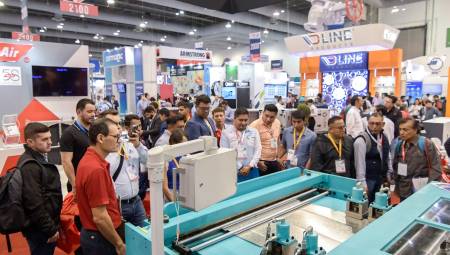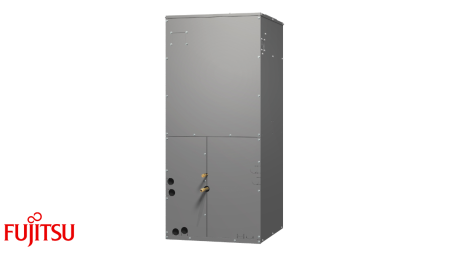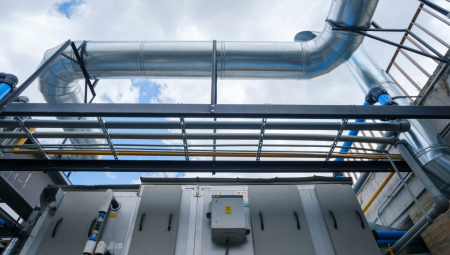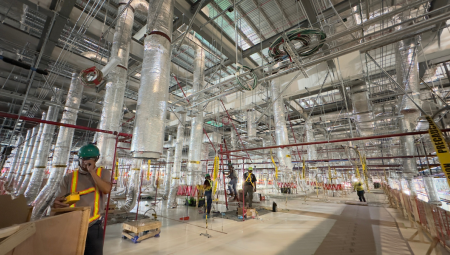Expansion Valves
 Expansion Valves Operation and
Expansion Valves Operation and
Thermostatic expansion valves are developed to regulate the injection of liquid refrigerant into evaporators. This coolant injection will always be regulated by a thermostatic element that is located at the top of the expansion valve which is controlled according to the reheating of the refrigerant.
There is a wide variety of thermostatic expansion valves, e.g. R-22, R 404-A, R-717 (ammonia). With balanced port, with MOP load. In all of them the objective is to deliver the maximum efficiency of the evaporator with adequate overheating.
The first thing is to analyze and know the operation of the expansion valve: it consists of a thermostatic element (1) separated from the body by means of a membrane, the thermostatic element is in contact with the bulb (2) through a capillary tube, a body with a seat and hole (3) and a spring or spring.
 Operation
Operation
P1: the pressure of the bulb acting at the top of the membrane and in the direction of opening the valve.
P2: the pressure of the evaporator, which influences the bottom of the membrane and the direction of closure of the valve.
P3: the force of the spring, which influences the bottom of the membrane and the only variable that is controllable by the technician.
When the valve regulates, there is a balance between the pressure of the bulb at the top of the membrane and against it will have the pressure of the evaporator and that of the spring, this in order to find the most suitable overheating of operation.
Overheating
The concept of overheating is the heat added to the steam after vaporization in the expansion valve. This can be measured in the place where the bulb is which is the suction pipe. The difference between the temperature of the thermometer and the evaporation pressure, translated to the temperature that corresponds to it, the result will be the overheating in the evaporator, which is designed to operate with a reheating range of 5 ° C. To obtain total overheating it is enough to change the thermometer to the end of the suction pipe, 30 centimeters before the compressor, and take the suction pressure to the compressor inlet. The difference in temperature will be the total overheating which should not be greater than 15 ° C. It is very important to clarify that these measurements should be made when the chamber temperature has already been obtained, if for some reason the desired temperature is not reached, the thermal balance or probable plugging due to dirt and / or humidity in the cooling system must be checked well.


Overheating serves to ensure that the liquid refrigerant will be evaporated in its entirety in the evaporator. But there are situations where you must modify the overheating adjustment, which can be done when you have distances greater than 15mts, in this condition you can reduce the overheating by turning the screw against the hands of the clock. It is recommended no more than a 360° turn in order to take care of the compressor, remembering that 90% of the cooling of the hermetic compressors is given by the suction gas. On the other hand, if the total overheating is very low, it will have to be increased and this is achieved by turning the screw in favor of the hands of the clock. It should be noted that the presence or absence of ice frost in a suction pipe does not indicate or guarantee the physical condition of the refrigerant.
 Valves with external pressure matching
Valves with external pressure matching
If liquid distributors are used, expansion valves with external pressure equalization should always be used.
The use of liquid distributors usually causes a pressure drop of 14.7 psig in the distributor and in the distribution tubes.
Valves of this type should always be used in refrigeration installations with large plate evaporators or heat exchangers, where the pressure drop will be higher than the pressure corresponding to 2°C.
MOP loaded valves
MOP load valves are normally used in manufactured equipment, where a limitation of the suction pressure is desired at the time of commissioning, such as in the transport sector and in air conditioning installations.
Mop expansion valves have a very small amount of load on the bulb.
This means that the valve or element has to have a higher temperature than the bulb. Otherwise, the load may migrate from the bulb to the element and prevent the expansion valve from operating.
MOP charging means a limited amount of liquid charge in the bulb. The acronym "MOP" stands for Maximum Operation Pressure and is the highest allowed suction/evaporation pressure in suction/evaporation pipes.
The charge will have evaporated when the MOP point is reached. Gradually, as the suction pressure increases, the expansion valve begins to close at about 4/5 psig below the MOP point. It closes completely when the suction pressure is equal to the MOP point.
MOP is also sometimes called "Motor Overload Protection".
How to select the expansion valve
The following data are important for the selection of the expansion valve:
• Pressure drop through the valve
• Internal or external pressure matching
• Refrigerant
• Evaporator capacity
• Evaporation pressure
• Condensation pressure
The thermostatic element is equipped with a laser mark on the top of the membrane. The code indicates the refrigerant for which the valve is designed:
L = R410A
N = R134a
S = R404A/ R507
X = R22
Z = R407C
This mark indicates the type of valve (with code number), evaporation temperature range, MOP point, refrigerant and maximum operating pressure, PS/MWP
Identification
The hole assembly for T2 and TE2 is marked with the size of the hole (e.g. 06).
The number of the hole assembly is also indicated on the packaging cover.
The expansion valve should be installed in the liquid pipe, in front of the evaporator, and its bulb attached to the suction pipe as close as possible to the evaporator.
In case there is external pressure compensation, the compensation pipe shall be connected to the suction pipe immediately after the bulb.
 Installation
Installation
The best mounting position of the bulb is in a horizontal suction pipe, in a position between one and four o'clock clock.
The location depends on the outer diameter of the pipe.
Note:
The bulb should never be mounted on the bottom of a suction pipe, due to the possibility that the existence of oil at the bottom of the pipe produces false signals.
The bulb must be able to measure the temperature of the reheated suction steam and therefore must not be positioned in such a way that it is subjected to foreign sources of heat/cold.
If the bulb is subjected to hot drafts, its insulation is recommended.
The bulb should not be mounted behind a heat exchanger, as in this position it will give false signals to the expansion valve.
Authors:













